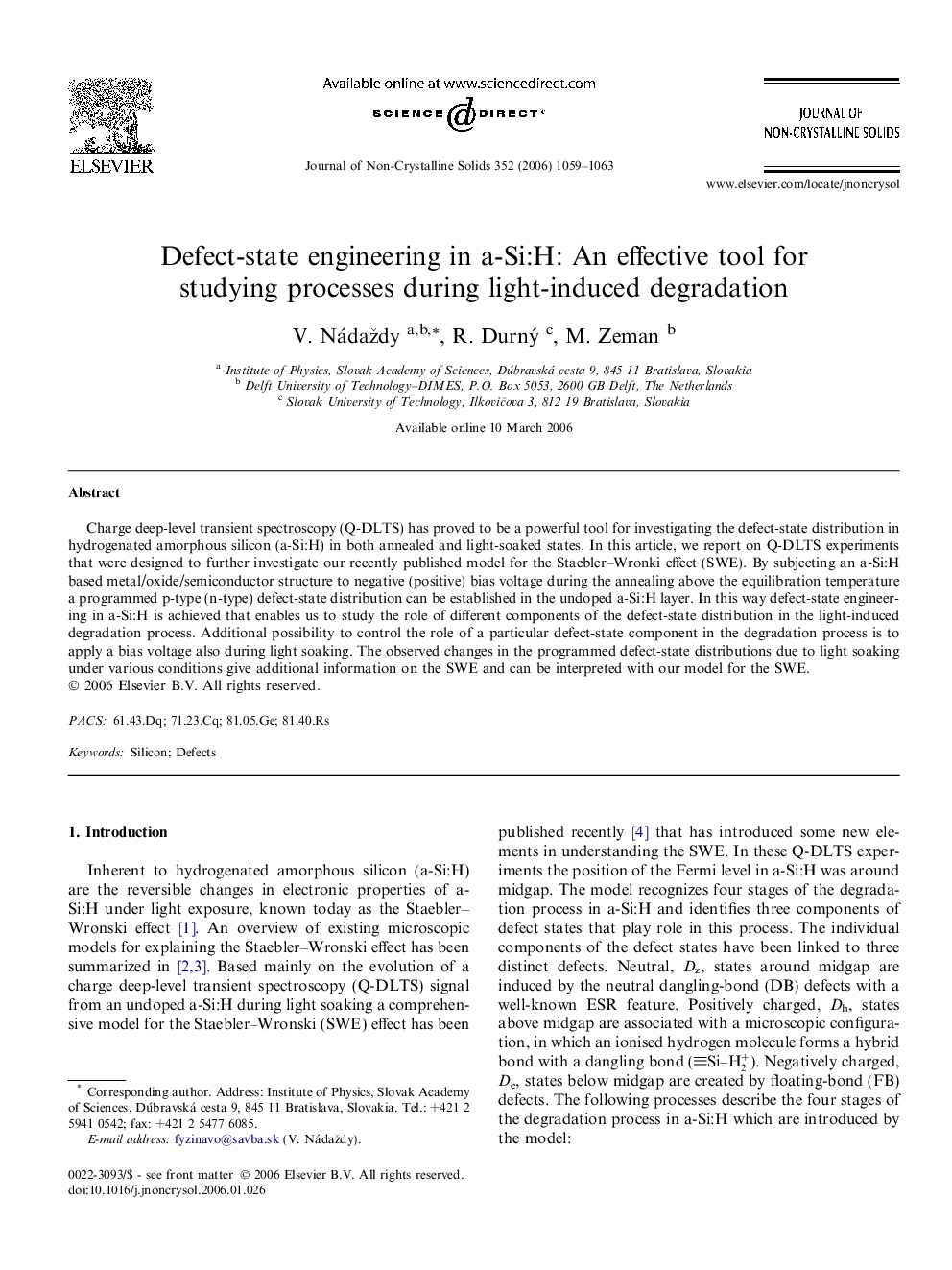| Article ID | Journal | Published Year | Pages | File Type |
|---|---|---|---|---|
| 1486342 | Journal of Non-Crystalline Solids | 2006 | 5 Pages |
Abstract
Charge deep-level transient spectroscopy (Q-DLTS) has proved to be a powerful tool for investigating the defect-state distribution in hydrogenated amorphous silicon (a-Si:H) in both annealed and light-soaked states. In this article, we report on Q-DLTS experiments that were designed to further investigate our recently published model for the Staebler-Wronki effect (SWE). By subjecting an a-Si:H based metal/oxide/semiconductor structure to negative (positive) bias voltage during the annealing above the equilibration temperature a programmed p-type (n-type) defect-state distribution can be established in the undoped a-Si:H layer. In this way defect-state engineering in a-Si:H is achieved that enables us to study the role of different components of the defect-state distribution in the light-induced degradation process. Additional possibility to control the role of a particular defect-state component in the degradation process is to apply a bias voltage also during light soaking. The observed changes in the programmed defect-state distributions due to light soaking under various conditions give additional information on the SWE and can be interpreted with our model for the SWE.
Related Topics
Physical Sciences and Engineering
Materials Science
Ceramics and Composites
Authors
V. Nádaždy, R. Durný, M. Zeman,
